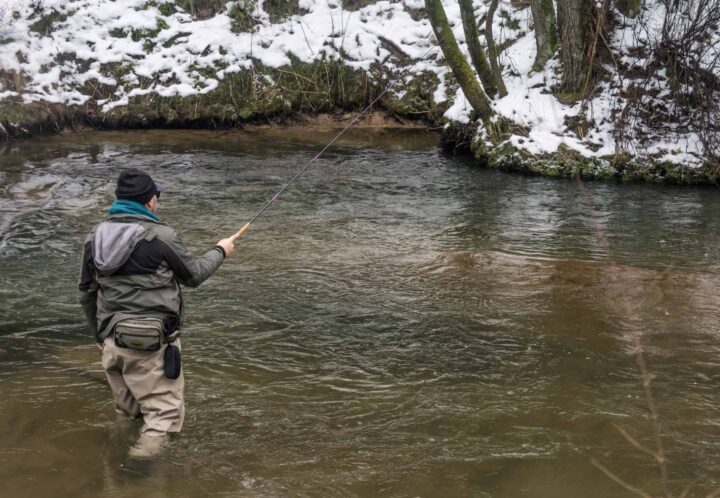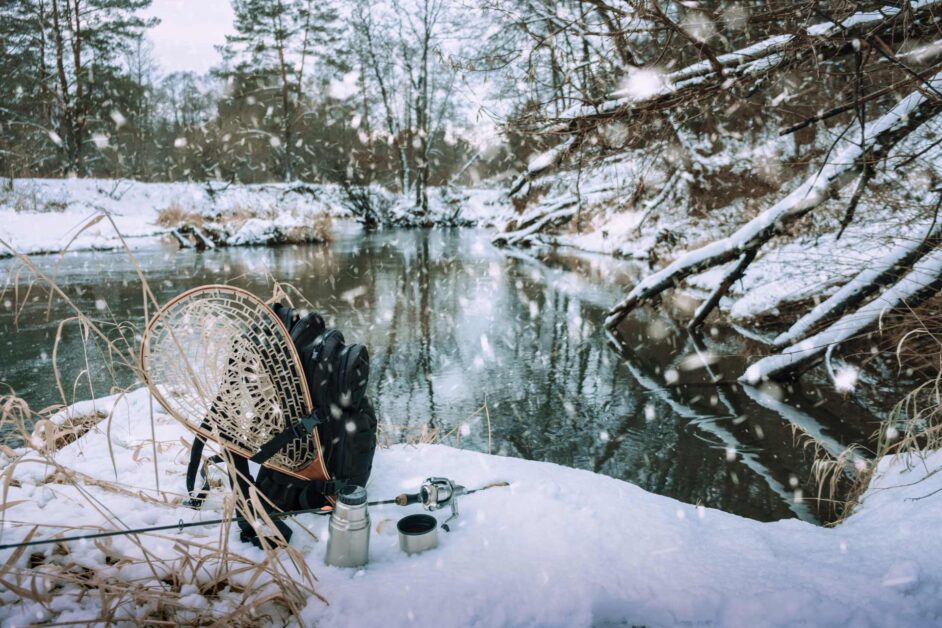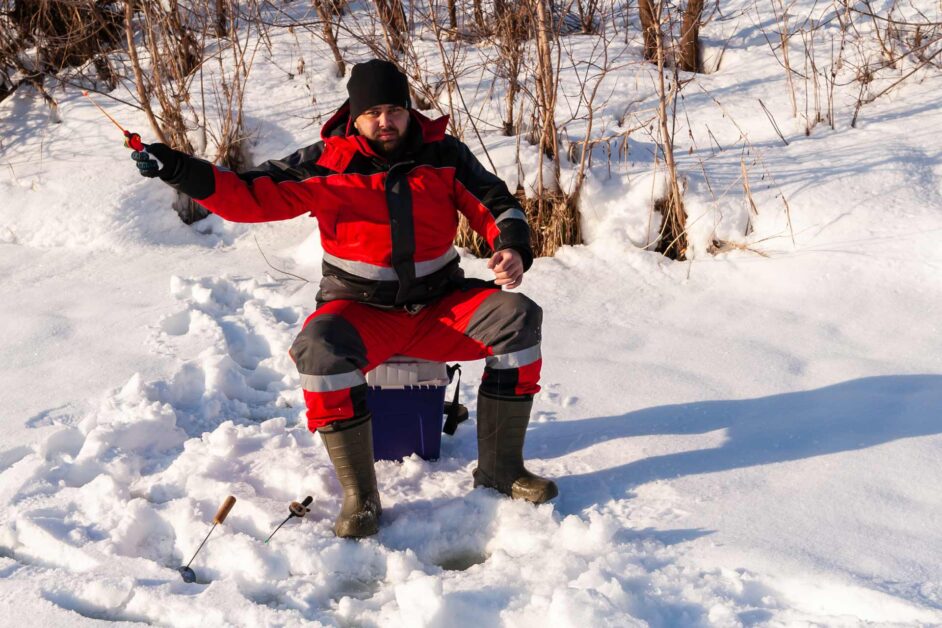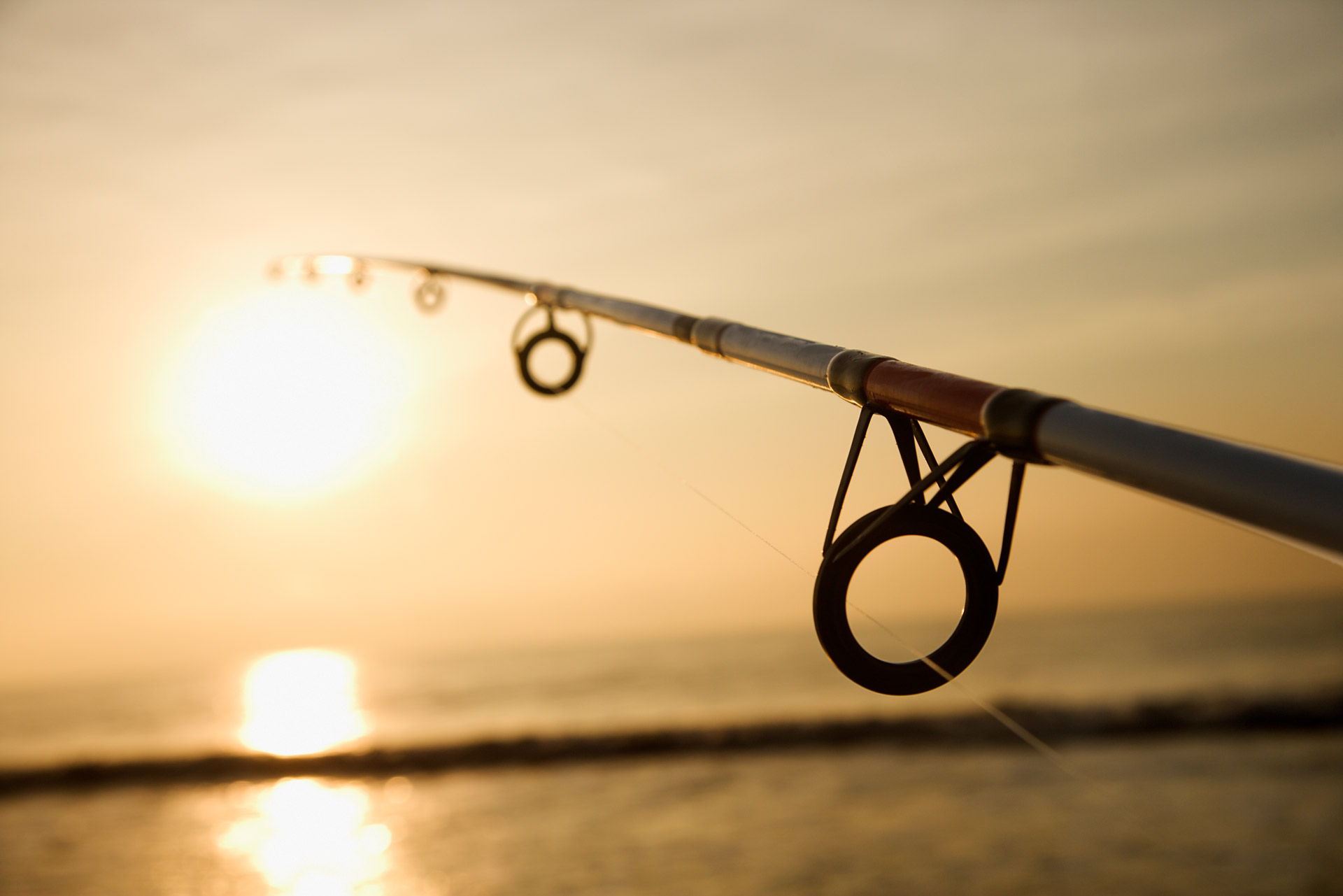10 Winter Trout Fishing Tips: Keep ahead of the game this winter

Winter is here, which means many of us will be heading out for some cold-weather fun. However, specific techniques work better in the winter than others when it comes to fishing for trout.
Wintertime trout fishing can be excellent if you know what to do. The first thing you need to do is locate deep pools on every body of water you plan to fish. Then, you need to match your fishing gear with the weather conditions.
You can enjoy trout fishing during the winter, but it requires more than just casting your line in a river or lake. It would help if you used a little "common sense" when fishing for finicky winter trout.
Here are ten tips to help you get started with your winter trout fishing trips. This article will help you understand the basics of winter trout fishing and how to get the most out of your next fishing trip.

1. Use smaller gear and size down.
You may have had success catching larger trout in summer, but winter is not the time to fish big flies. Instead, fish smaller patterns and work them more slowly; this will ensure your fly moves with the natural drift or small streamer.
Smaller patterns will give you a better chance of fooling trout in winter. Fish these flies more slowly to ensure they move with a nymph's natural drift or small streamer. This will increase your chances of success.
The size of the fly you choose to use is essential, especially in winter. Larger flies are often more visible to trout and may cause them to become suspicious. Smaller patterns look more like natural food items and will be more likely to fool trout.
In addition to using smaller flies, it is essential to work them more slowly. This will ensure that they are moving in a way that looks natural. When you fish quickly, your fly may not move properly and will be easier for trout to spot. Take your time casting and retrieving your fly; this will give you the best chance of success.
2. Slow your presentation down
In winter, the biggest mistake anglers make is cranking the drag too tight and fishing at full speed. Trout are much less active in winter, but they still need to eat. So keep your presentation slow and natural, and you'll be surprised how many more bites you get.
Anglers often think that, unlike bass, trout are sluggish in winter and don't need to feed as much. However, trout are still active, and they need to eat to survive. The key is to slow down your presentation and give the trout a chance to take the bait. If you fish at full speed, you'll likely miss many chances for a bite.
3. Target and fish tailwaters
Tailwaters are often warmer than rivers, which means trout can be more active. They will also have a better food source because tributaries provide plenty of nutrients for trout to eat.
One of the main reasons people don't catch many trout on tailwaters is that they don't know how to match the right tactics to the water. When fishing tailwaters, you'll need to adjust your tactics to account for the different conditions. You'll need to use a slower presentation, work smaller flies more slowly, and keep your drag loose. You'll also need to pay close attention to the weather and how it's affecting the water.
Because tailwaters have a different environment, you must know what the fish are eating before you start fishing. This will help you determine what flies are best for the water and how to fish the best. For example, fish patterns like small stoneflies and caddis may be best if you're fishing a river with low oxygen levels. However, if your tailwater has good oxygen levels, fish may prefer nymphs or a combination of insects.
Try different flies Fishing in winter can be frustrating if you don't know what to use. The most important thing you can do to improve your chances is trying different flies. If you have access to different fly fishing shops, try to visit a couple of them. You'll find new flies at each shop that you've never seen before. Then, please take a few of them home and practice fishing them.
4. Look for deep, slow water.
In winter, trout slow down and head for deeper water. Find an area with a deep run or hole where trout can rest during the day or between feeding periods, and you'll have a much better chance of catching a lot more fish.
To find deep pools, slow water where trout can rest during the day or between feeding periods, you'll need to scout. Look for areas with a deep run or hole on the river, and you'll likely find plenty of trout. Also, keep an eye out for areas in the shade, as trout will often congregate in these spots.
Fishing requires additional care and attention in winter than any other time of year because trout's metabolism slows down, and they can't maintain their body temperatures as well as before.
You'll need to adjust your fishing tactics to account for this. For example, you'll need to use a slower presentation and keep your drag loose. You'll also need to pay close attention to the weather and how it's affecting
5. Fish later in the day
As anglers, we're used to getting up early and heading out to fish while it's still cold and dark. In winter, though, trout don't start feeding until the sun is shining—and often not even if the light isn't right. So sleep in and go fishing later in the day; you'll be amazed at how many more trout you see rising.
Indeed, as the day warms up, trout become more active and feed more frequently. As with fishing at any time of the year, knowing your local water before heading out is important. Do some research on the weather and what the fish are eating. This will help you determine what flies are best for the conditions.
In winter, though, you'll need to adjust your tactics to account for the different conditions. For example, if the water temperature is colder, fish slower, work smaller patterns more slowly and keep your drag loose. Then, when it comes to casting, you may need to adjust your approach.
6. Target warm days
Like summer, winter can sometimes offer a few unseasonably warm days that provide near-perfect conditions for catching trout. If you live in an area where such days occur regularly, pay close attention to weather forecasts so you can get on the water when the weather warms up. This will allow you to take advantage of the warmer water temperatures.
Although trout tend to hold their feeding habits steady throughout the year, warmer weather often triggers a feeding frenzy. Avoid cold fronts if possible.
As the weather warms up, trout become more active and feed more frequently. You'll need to be on the lookout for these feeding times and be ready to take advantage of them. Try fishing earlier in the day or at night, when the sun is still out, but the fish are most active.
If you can't find any fish during a warm day, try fishing with the opposite cast. Instead of casting upstream, try casting downstream. This can help you locate fish feeding in deeper water or holding in riffles, which are generally shallow. You may even find that some of your old fishing spots are working well again.
7. Try dead drifting a streamer.
Even in winter, trout can become accustomed to seeing a particular type of fly presented one way. So to give yourself the best chance of catching them when they're close to their feeding windows, try fishing your streamer dead drift instead of stripping it slowly or using your standard retrieve.
As an illustration, if you've always fished a dry fly, try fly fishing it dead drifted. If the fish are holding in shallow water or riffles, you may be able to use a different presentation that works better for the conditions. For example, if you find that your streamer is sinking too fast, you may be able to use a heavier, slower sink-tip line to slow it down.
As a result, you may find that winter brings you better success with this tactic than any other time of year. Of course, this doesn't mean that you should abandon all other tactics. Use whatever approach works best for you at any other time of year. However, if you find that this is the time of year that's most productive for you, give dead drifting a try.
8. Be patient
When winter fly fishing, trout feed less frequently and hold on to their food longer than those feeding in warmer weather. As a result, you may need to take more time to find them and do practice a slow fishing technique. Even if you're on the water during prime feeding times, you may have to fish for an hour or two to find any trout.
While you may not be able to catch trout all day long, there are still plenty of opportunities to catch them during the colder months. Remember that fish don't stop feeding and holding up even when it's cold out. You'll often find fish rising to your fly as soon as you get out on the water.
9. Take two rods
One fly fishing rod for fishing, and one for keeping track of the fish. Even if you're on a river where you know the fishing is good, take another rod with you just in case.
You will be able to keep track of the fish biting on your mainline and be ready to switch to a different fly or presentation without stopping casting.
Make sure that you check the local fishing laws to ensure that two fly fishing rods are allowed on the water you will be fishing.
10. Layer clothes and keep warm

If you plan to be on the water at any time, you should always wear several layers of clothing. This includes both clothes that keep you warm and clothes that allow you to move quickly.
It's also a good idea to wear gloves and a hat to protect yourself from the elements.
Thermal clothing is essential in winter because it helps regulate your body temperature. Make sure that you have at least one layer that is 100% wool.
Next, add other layers that have polypropylene in them. An excellent thermal jacket will help protect you from the elements. This will help wick away moisture from your body and keep you warmer. Finally, add several more layers of clothing that are 100% cotton or another man-made fiber.
You should also wear a thermal shirt underneath all of this so that if anything happens to any of your thermal layers, you'll be able to remove it quickly without taking off too much else.
Never go out on the water unprepared. Ensure you have everything you need, including plenty of food, water, matches or a lighter, warm clothes, a first aid kit, a knife, and a cell phone.
Enjoy Your Winter Trout Fishing Trips
As I said at the beginning of this article, fishing during winter can be challenging. However, you should find that winter trout fishing becomes more enjoyable with some careful preparation and knowledge.
There's no better way to enjoy the beauty of winter than by going trout fishing. It's even better when you can get outside and practice what you've learned during the brief. It would be best if you didn't rely solely on the tips in this article. That would defeat the purpose of learning. Instead, use your knowledge and experience to develop your techniques for winter trout fishing.
So get out there and enjoy the great outdoors with your family, friends, and favorite fly rod.
I've provided several articles that may help you prepare for your next trip. If you're new to winter fishing, I'd recommend checking out our crappie ice fishing at night article. This will provide you with information about fishing during the coldest months. If you're looking for more general information about fishing in winter, you may want to read our winter fishing articles.



